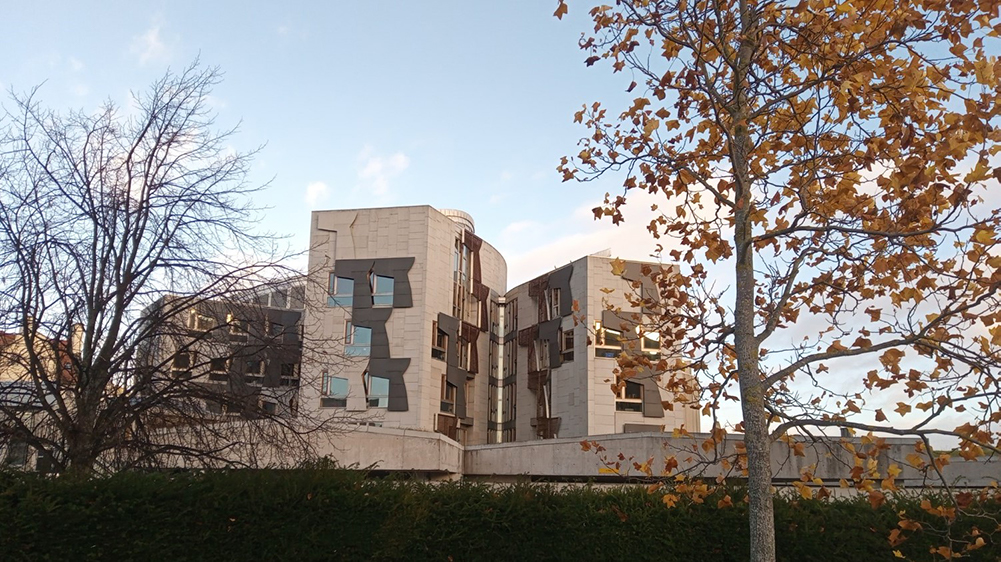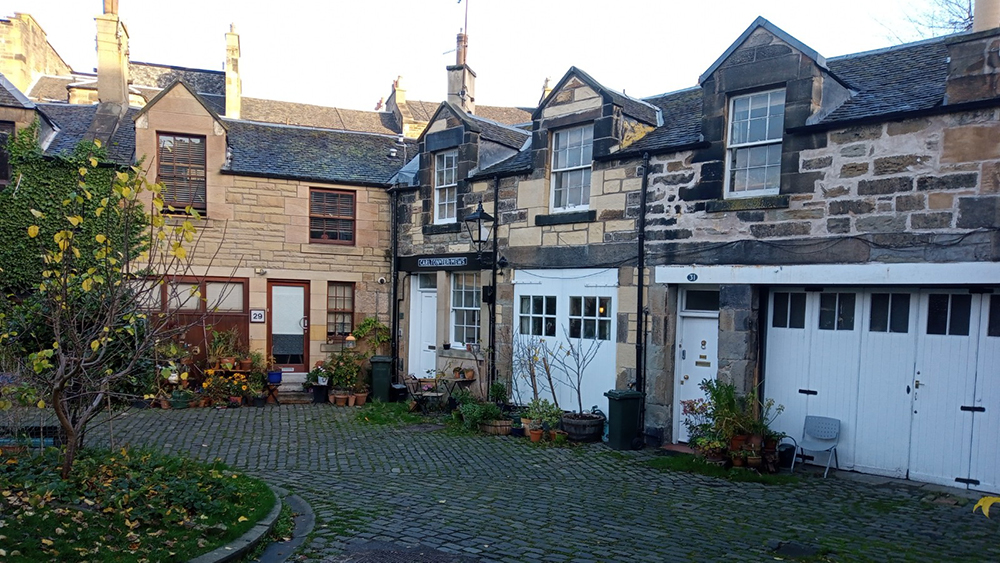The draft National Planning Framework 4 (NPF4), published a week after Guy Fawkes night, packs even more explosives under Edinburgh’s short-term let sector. Angus Dodds explains why its final version may impact hosts even sooner than the next Local Development Plan and ponders what might happen next and what some owners might want to do now.

In our last blog, I noted how the consultation on Edinburgh’s Short Term Let control area used relatively placid language in explaining the way that the Council would continue to ‘manage’ short-term lets in the city; while only two months later, policy HOU7 in the Proposed City Plan 2030 (currently itself out for consultation) was far more strident, stating that applications resulting in a loss of housing would simply be refused.
There is a definite sense of déjà vu then when one considers how the Scottish Government’s language has also hardened on this topic in a relatively short period of time. Last November’s Position Statement on the next NPF did briefly mention short-term lets. It noted that one of its priority policy changes would be “Tackling the impact of short term lets in pressured areas by providing a framework for decision making on planning applications”.
Last week’s publication, now open for consultation until 31 March next year, puts some meaty flesh on these bones, stating:
“Development proposals for the reuse of existing buildings for short term holiday letting should not be supported if it would result in:
• an unacceptable impact on the local amenity or character of a neighbourhood or area; or
• the loss of residential accommodation where such loss is not outweighed by local economic benefits”.
There’s not much nuance in the chosen wording here; no safety net for ‘main door flats’ and ‘detached properties’, while use of the word ‘or’ suggests that this is planning policy that really means business. Yet on the face of it, (and from a purely personal standpoint), I don’t think there’s too much to argue about in the stated approach.

Unlike previous NPFs however, the wording this version uses will be even more important than that of its predecessors, as the recent Planning Act confers an enhanced status to NPF – making it part of the Development Plan. This is significant as under the planning system in Scotland, planning decisions have to be taken in accordance with the Development Plan (unless material considerations indicate otherwise). By clearly setting out a position on short-term lets therefore, what NPF4 says about this contentious topic will be a determining factor when deciding if planning applications should be granted planning permission. With a projected adoption date later in 2022, what NPF4 says about short-term lets could therefore be more significant more quickly than even City Plan 2030.
Of course in places like Edinburgh where a short-term let control area is proposed, planning permissions are the entry tickets that the new licensing regulations insist upon; no permission, no right to apply for a licence. The licencing system incidentally is currently anticipated as being up and running by October 2022, with all existing operators still expected to have applied for their licences, with planning permissions in hand, by March 2023.
So for Edinburgh, what does all this mean in a practical sense? What should short-term let property owners do now? Well, at the time of writing nothing has actually been approved and so nobody really has to ‘do’ anything. And here’s the funny thing, given the radical changes proposed in the way short-term lets are to be regulated in the City, it’s curious to consider that none of the 4 key pieces of infrastructure that will support its future regulation have actually been approved or adopted yet. The licensing regulations are currently being tweaked by the Housing Minister; consultation has only just finished on the extent of the City’s short-term let control area; Proposed City Plan 2030 is out for consultation until 20 December; and, NPF4 has only just been published as a consultation draft. Theoretically then, all four could yet ‘fall out of bed’ and nothing at all might change.
That of course seems highly unlikely. If the authors of the various measures are successful in achieving their stated outcomes, Edinburgh’s short-term letting landscape will completely change and quite quickly. If they all survive their respective rounds of consultation and challenge, October 2022 will be when all permanent short-term let properties across the whole city will need to seek the benefit of planning permission. Of course by then, probably such permissions will be impossible to secure, as at both the national and local levels there will be very little planning policy support for short-term letting uses in flats and houses.

And so for the most part, that will probably be the end of that. There will be precious little to remind future generations of the impact Airbnb had on the city – save perhaps the ghostly scrape marks of clumsily handled suitcases on the walls of tenement landings across the city.
Joking aside, I do say for the most part quite seriously. As noted above, planning decisions are to be taken in accordance with the Development Plan unless material considerations indicate otherwise. Right now, the Development Plan is the 2016 Plan that is completely silent on loss of housing and short term lets. Non-statutory guidance on change of use that was drafted in support of this Plan has just been updated this month however, and continues to state that:
“Change of use in flatted properties will generally only be acceptable where there is a private access from the street, except in the case of HMOs”.
Clearly this presumes against allowing changes of use for flatted properties in tenement buildings. However, it does continue to provide support in principle for main door properties. This means that these types of properties might be in a select group that could survive the impending closure of short-term letting across the city. Other property types in this exclusive club would include those that can prove that they have been operated as short-term lets for at least 10 years, and other properties that have perhaps become short-term lets after an earlier non-residential past (eg artists studios, offices or even shops).

As noted above, I fully understand the rationale behind attempts to get a grip on short-term letting. The obvious consequence of all the controlling measures coming into force however is that there will be both a huge and fairly sudden drop in the supply of tourist accommodation, and a commensurately huge spike in hotel prices. Nevertheless, if that is the only way to get housing in the city back on an even keel, then so be it. During a housing crisis, housing for permanent residents does need to be the Council’s main priority.
Presently though, Edinburgh has an overall housing stock of around 200,000. It seems likely that the small group of properties that might still be able to negotiate a way through the planning obstacles even now, probably only number in the dozens, and certainly nothing like the thousands across all property types that are currently advertised on Airbnb and other platforms. Numerically therefore any impact they might have on overall housing stock could be considered as pretty negligible.
Notwithstanding any such good arguments for keeping these properties as visitor accommodation, the reality is that hosts that do operate from such properties will need to get their skates on if they want to preserve their position. While I said earlier that no such property owners technically need to ‘do’ anything right now, that’s not to say that voluntary action now would seem wise in anticipation of the drastic changes coming. The reality is that in the world of planning, policy is king, and even for these types of properties the policies emerging at the National and Local level will quite quickly begin to affect them too, therefore also blocking their route to securing a licence.
Despite the relentlessly negative portrayal of short-term letting, if the numbers involved are small and the level of customer satisfaction consistently high, they can be a real asset to their locality. It would therefore be nice to think that some more main door hosts will still be keen to fly the flag for short-term let visitor accommodation, and in so doing offer a hugely reduced but still very important degree of choice to visitors who, we are increasingly told, are looking for an ‘authentic experience’ while staying in our City.
Contour Town Planning has recently secured a number of Certificates of Lawfulness from City of Edinburgh Council for properties that have been run as short-term lets for more than 10 years, and has also recently been instructed by a number of main door property owners to assist them with securing planning permission. If you would like to discuss how we could assist you with this type of work or anything mentioned above, please do not hesitate to get in touch with Angus Dodds on 07729 873829, or by email at angus@contourtownplanning.com
